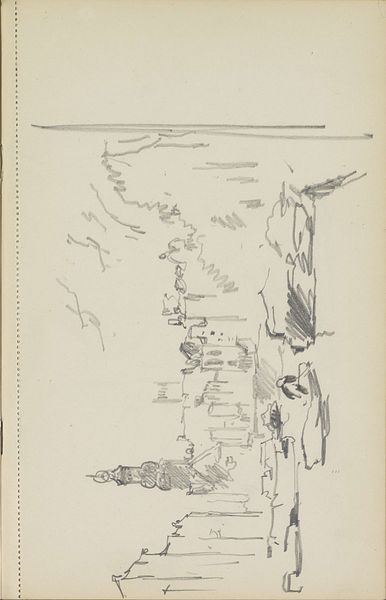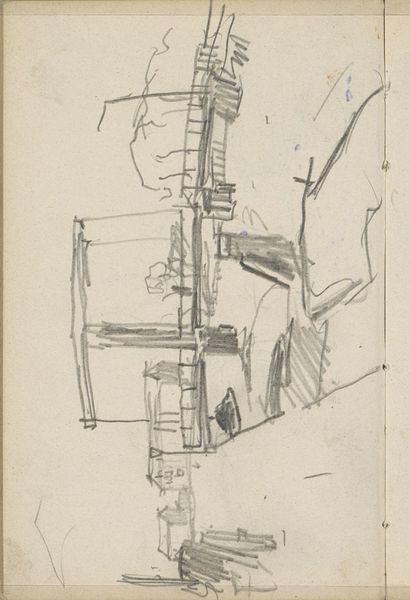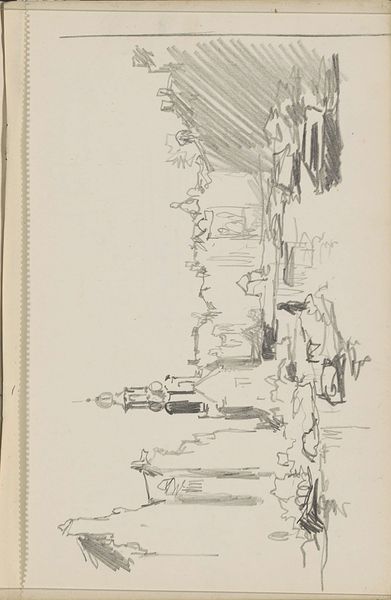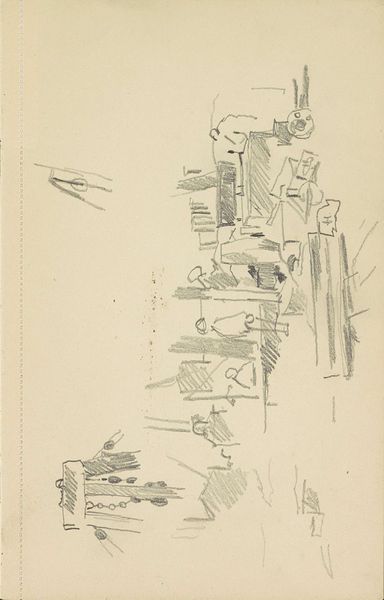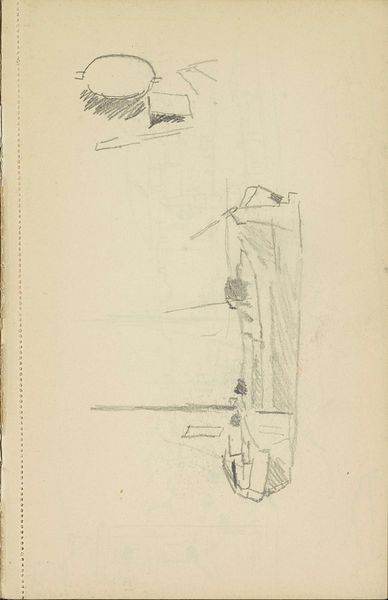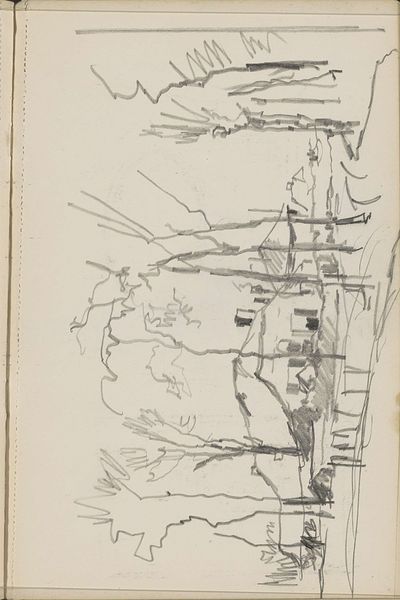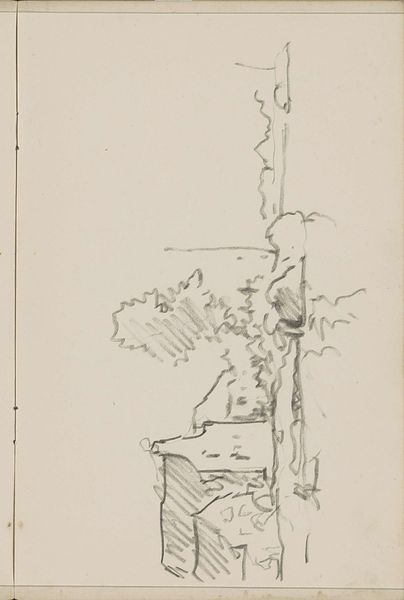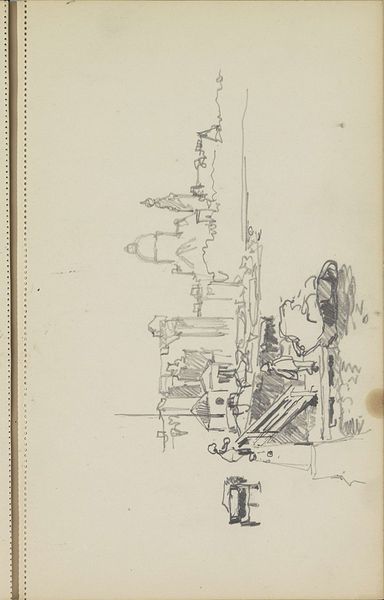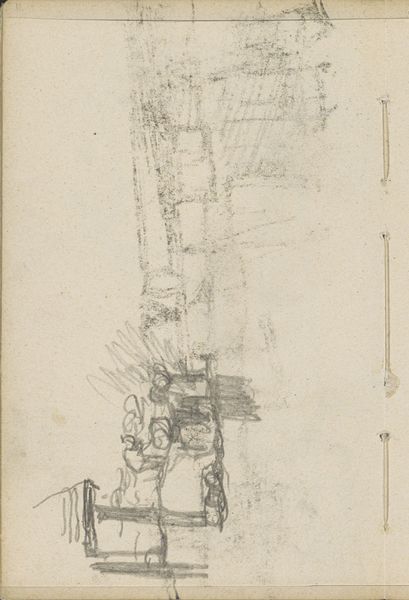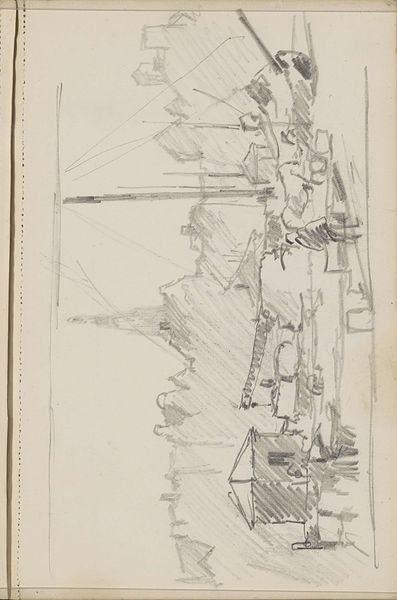
drawing, pencil
#
drawing
#
ink drawing
#
pen sketch
#
landscape
#
pencil
#
realism
Copyright: Rijks Museum: Open Domain
Editor: So this is "Kade aan een kanaal," a pencil and ink drawing by Cornelis Vreedenburgh, dated sometime between 1890 and 1946. It's a pretty quick sketch, and I am intrigued by how minimal it is. What stands out to you as you look at it? Curator: What strikes me is less what *is* there and more what isn't. Think about the rise of industrialization during that period. How would this tranquil canal scene, so lightly rendered, be received against the backdrop of rapid urbanization and its accompanying social upheavals? Does this sparseness, this quiet, represent a conscious rejection of that world, or is it simply an aesthetic choice? Editor: That's interesting. It almost feels… nostalgic, perhaps, even if created in real-time. Do you see that sentiment reflected in its presentation at the Rijksmuseum? Curator: Museums often play a powerful role in shaping narratives around art, imbuing pieces with particular cultural significance. This drawing’s inclusion at the Rijksmuseum elevates it. Was this always considered "museum quality," or did its value shift over time due to changing cultural attitudes toward industrialization, urban life, and representations of nature? The exhibition context is crucial. Editor: So, understanding where and *why* it’s displayed becomes almost as important as the drawing itself? Curator: Precisely. How institutions frame artworks directly impacts their perceived meaning and importance. We are not simply looking at a drawing, we are observing the product of historical and cultural forces that placed it there. Editor: That gives me a lot to consider about the role of art and museums! Curator: Indeed. This simple sketch opens up a fascinating discussion on art's purpose within broader society.
Comments
No comments
Be the first to comment and join the conversation on the ultimate creative platform.

